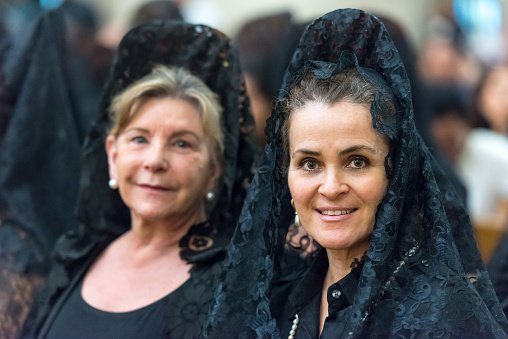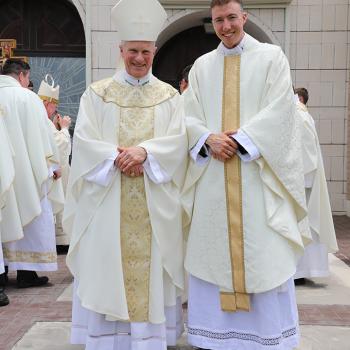The first letter of the Saint Paul to the Corinthians is one that is filled with intrigue. The reader sees a church that is in peril and is operating under a type of class system, sexual immorality is taking place, and one that is not operating under the modes of worship prescribed by Paul. It is the matter of worship that Paul turns to in chapters 11 through 14 of first Corinthians.
Corinthians And Proper Context
There are many issues presented in 1 Corinthians 11:2-16, and much gets taken out of context in today’s society. A modern reader may read about Paul discussing women wearing head coverings and being submissive to husbands and conclude that he was a misogynist that was all about letting women know their place. However, nothing could be further from the truth, and all things must be seen in context.
Reading the text of scripture through modern lenses causes problems, and this passage one that is easily interpreted incorrectly. It does not help that there are many scholars who disagree on the meaning.
The purpose of this paper is to examine the background on 1 Corinthians 11:2-16 to discover the cultural and societal factors behind Paul’s words. Paul’s words are perplexing, and some scholars state that the mandate to wear a head covering was cultural and was about modesty. Others say that the head covering could have been more, and Paul said to wear it when prophesying which meant that women were pastors in Corinth.
A Brief History of Corinth
The city of Corinth was located along an isthmus that connects Peloponnese peninsula with the rest of Greece. It is said that Corinth was a city highly favored by the goddess Aphrodite, and as such she was the city’s patron deity. The city has an interesting history and the site itself is very ancient. It was founded around 850 B.C. it was very influential in the region, but due to various conflicts it would eventually be all but abandoned. Julius Caesar reestablished the Roman colony of Corinth shortly before he was assassinated in 44 B.C.

The Apostle Paul visited the city of Corinth during one of his first missionary journey as recorded in Acts 18:5-6. There was a Jewish population present as there was a synagogue that was present. The church that was founded by some Jewish converts but was mostly Gentile and was founded around 50 A.D. One of the most high profile converts was the synagogue ruler named Crispus (Acts 18:7-8). According to Acts 18:11, Paul stayed in Corinth for 18 months teaching and making converts.
The church at Corinth faced considerable opposition from the Jewish population. Paul’s letter to the Corinthians shows some tension between Paul and the church. The letter was written between 54-55 A.D. and is all about Christian purity. As previously stated, there were a lot of issues, and Paul was concerned in correcting those for the sake of evangelism and the souls involved.
The Issue of Head Coverings In 1 Corinthians
Earlier in his letter Paul discusses sexual immorality between a man and his stepmother and people partaking in excess in the Lord’s supper just to name a few. In 1 Corinthians 11:2-16 Paul addresses women and head coverings especially when gathered in an assembly. The issue of head dress is interesting as it really is not understood exactly what aul is referring to. Perhaps it is a head covering of some sort, a certain hairstyle, or even well-kept hair.
The great apostle shows his great leadership skills with the church at Corinth by first commending them for maintain the traditions that he gave them (1 Cor. 11:2). Paul founded the church approximately four to five years before, and he transitioned like this to build rapport. Paul does not mention traditions any after this verse, but this lays the foundation for his argument.
In 11:3 Paul writes about the importance of Christ being the head of man, and man being the head of his wife. Paul is not discussed man and woman in general, but the context depicts a husband and wife. What is certain is that Paul is using the background of Genesis 1:26-27 and 2:18-23 in relation to this to bring about creation.
In 11:4 Paul writes about a man praying without his head uncovered brings dishonor. Withing the religious system of the Roman empire, which Corinth was a big part of, head coverings were a traditional practice. Therefore, it was a cultural and societal norm, and not to do so brings undo attention to oneself. Within Roman society, especially with the construct of the cult, a covered head was often a statement of one’s position in society. It is possible that the concept that since men wore head coverings in their former religion that they carried it on into their new faith. To fully embody their new faith, this was something that had to be discarded.
In 1 Cor. 11:5 Paul continues his thought from the prior verse by bringing head coverings for women into the equation. He says that if a woman prays and prophesies without a head covering brings dishonor on herself. Since Paul would not likely develop a novel custom, it stands to reason that this is also something that the church in Corinth would have understood fairly easily. Hair during this era in the Roman empire was worn long by women. There are several pieces of art and coins that have been recovered that show various hairstyles that evolved to form a type of head covering.
The Roman empire in the first century was also a culture that was about honor and shame. If a woman did not where a head covering it was a sign or being immodest and perhaps even unchaste. At the end of 11:5 Paul also says that a woman with an uncovered head is akin to her head being shaved. This was a very deliberate point to bring home his argument of an uncovered head being a sign of immodesty in Corinthian culture. If a woman was caught in adultery, it was common for her head to be shaved, and this act would lower her status to that of a harlot. This was a warning from Paul and not something he was writing to be demeaning. From a cultural standpoint having an uncovered head made a woman standout because it would mean that she was not a roman citizen.
Paul’s Use Of Literary Devices
Saint Paul uses a literary device that was very common among Mediterranean writers during this time. In 1 Cor. 11:6 he mentions that a woman shave her head if she could not wear a head covering. This is absurd when the background of verse five is taken into consideration, but he does this to make a point. The long hair of a woman was considered to be sexually appealing, and to not wear a head covering was the equivalent to flaunting one’s sexuality.
In other words, it was about much more than a simple hair covering. Just as a shaved head lowered a woman’s social status to the level of a prostitute, not wearing a head covering said a lot about man in the marriage as swell as the state of the marriage. Paul contrasts two different situations that lead to the same conclusion as a way of communicating an important truth.
What follows next can be considered difficult especially when then background is not understood. Paul states that man should not cover his had then says that woman is the glory of man. At first glance it seems that Paul is placing the woman further from God than man, but that is not the case. The purpose of worship is to glorify God. The rejection of the customs and traditions that Paul taught the Corinthians did not glorify God but took away. A man whose head was covered, and a woman whose head was covered did not bring glory but dishonor. It this case both are equal because they will both bring glory to God by doing what Paul is asking them to do. Paul simply uses an example from creation, which he had previously done.
Headcovering As A Sign Of Authority
Paul continues his letter about head coverings and brings the angels into the equation in 11:10. Why would women have to wear head coverings because of angels? The background is fascinating and goes back to some Jewish traditions that circulated in the day. There was a tradition from Qumran that said that angels participated in worship and learned through the lives of the assembly. Angels were also considered to be guardians of creation, but mankind would judge angels according to his words in 1 Cor. 6:3. Therefore the head covering that Paul is asking the women to wear is also a sign of authority.
The following verses (1 Cor. 11:11-16) show Paul writing to wrap up his argument, but he does so in a countercultural manner. Women were not the most respected sex in Roman society. For the most par they were looked down upon, and if they were poor even more so. Paul discusses how a Christian marriage is one that is based on mutual respect and love. The identity of the woman is not tied up in the identity of the husband as Roman society held. Both sexes are of God and are needed by each other. This was truly countercultural in Corinth.
As previously stated, head coverings for woman were a statement of modesty and respect for her spouse. In 1 Cor. 11:13-16 Paul contrasts what bring honor to each of the two sexes. In Corinth long hair brought a woman honor while long hair brought a man dishonor. Men were expected to have short hair, and this was seen in the images of the various gods. The gods Apollo and Dionysos, were depicted as having longer hair but the rest were short.
Conclusion Regarding Headcoverings And Corinthians
The passage in 1 Corinthians 11:2-16 is one of the most perplexing passages in scripture. Many scholars have taken on the task, and many have come to different conclusions. A proper understanding of the backgrounds that had influence at the time is crucial to understanding the meaning of the text. Corinth was a city in Greece and part of the Roman Empire. Its culture and societal norms, though there were some similarities, were very different than Jewish culture. Those two cultures are vastly different than what we are used to in 2021. Viewing this text through the lens of 2021 is a recipe for disaster that leads to a lot of these misogynistic interpretations that some put forth.
Head coverings were to display modesty and respect for one’s spouse. It was about not distracting from God and taking away from worship. Paul also addressed men and their hair style in a similar fashion. In the end Paul shows that both are God’s creation and created for the glory of God. They are both needed and important.
There is some debate on whether the hair covering Paul is requesting is a physical covering or a hair style. Though there is no way to conclude 100% one way or another it does appear to be the latter. There are several depictions in art and coins of hairstyles that are pulled up and wrapped around the head. The hair of the woman is not free flowing as that would have been seen as a sign of availability.














